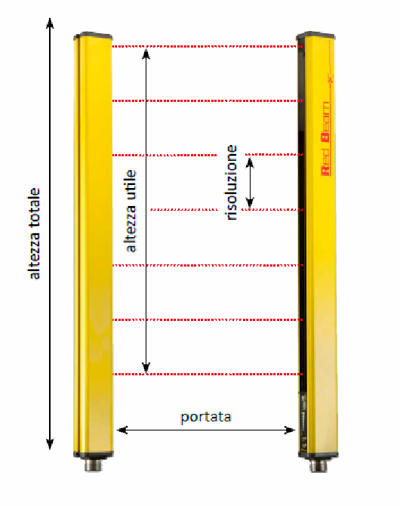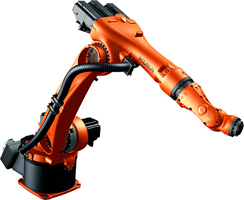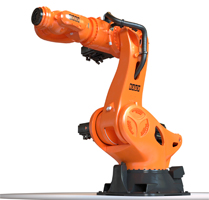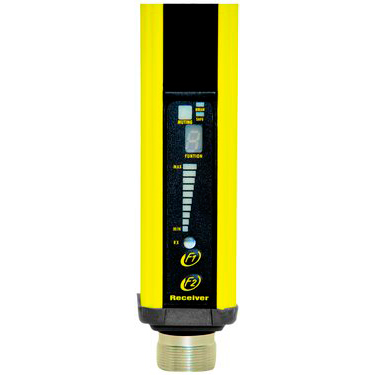
Resolution: minimum size the Barrier is able to detect using its internal optical sequence, in order to send an alarm signal and secure the system if one of them has been intercepted by an object with size equal or greater than the resolution.
Range: maximum distance between the Receiving and the Emitter elements that the Barrier is able to tolerate, according to the specifications of the manufacturer. N.B. : using mirrors the signal absorption increases and therefore the range decreases by 15% for each mirror.
Working Height: length of the protection offered by the Barrier through its photoelectric beams. If placed vertically, it defines the height of protection, if placed horizontally, it defines the depth of protection.
Overall Height: total height of the barrier.
Response time: time needed to switch from the Control state (no beam interrupted) to the Alarm state (one or more beams interrupted).
Security level (ESPE Type): selected according to the risk analysis by the machine manufacturer and/or user.
Definition taken from the Standard CEI EN 64196-1 Machine Safety – Electrosensitive protection devices part 1: general regulations and tests
Immediately; or
As an outcome of the next periodic test; or
At the activation of the sensor device
and e blocking state must be activated within the ESPE.
At the sensor device activation;
At the bootstrap or at the stop;
At the restart.
It should not be possible to automatically reactivate l’ESPE from a blocking condition by interrupting and reactivating the power if the malfunction that has caused the block is still present. If the single malfunction is not a dangerous malfunction itself, an additional malfunction must not cause a dangerous malfunction.








